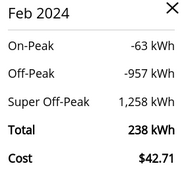fromport
Solar Addict

California introduces bill to assess rooftop solar net metering
California Assembly member Laura Friedman has introduced a bill to require the California Public Utilities Commission (CPUC) to consider the costs and benefits of rooftop solar and its non-energy benefits when designing net-metering rates.
California Assembly member Laura Friedman has introduced a bill to require the California Public Utilities Commission (CPUC) to consider the costs and benefits of rooftop solar and its non-energy benefits when designing net-metering rates.







